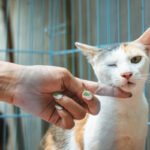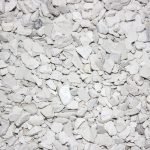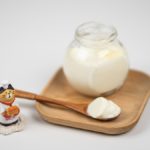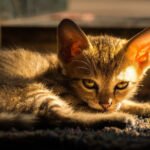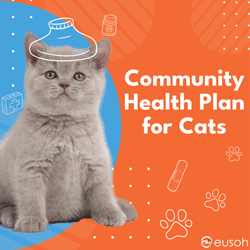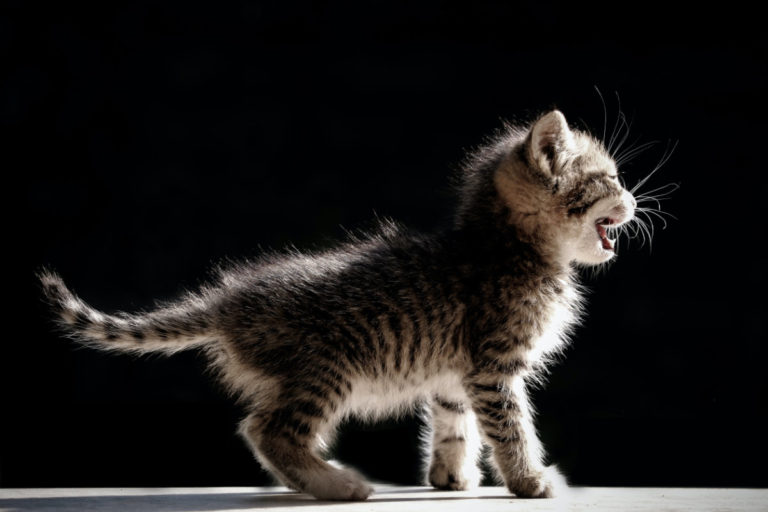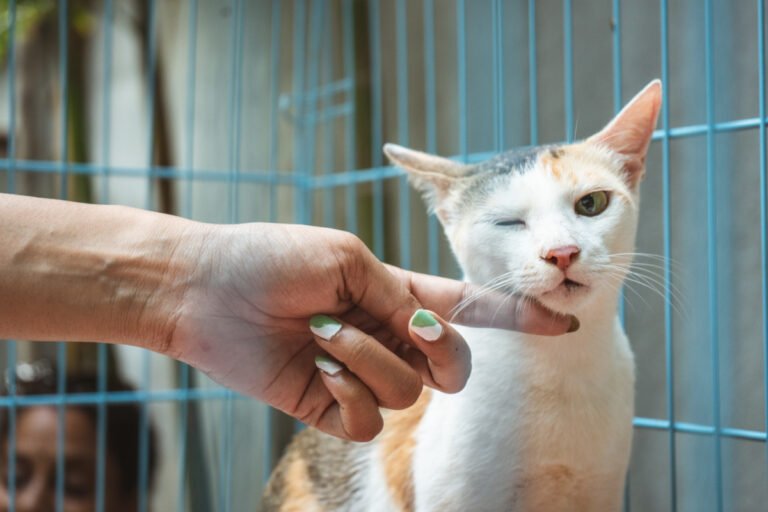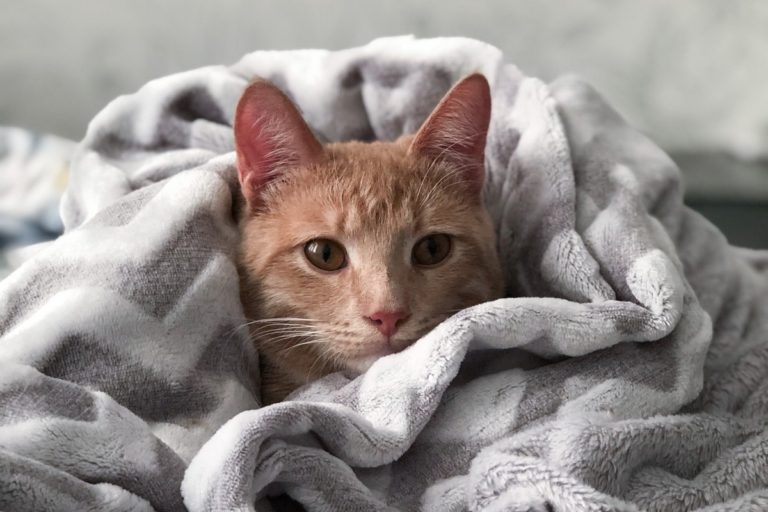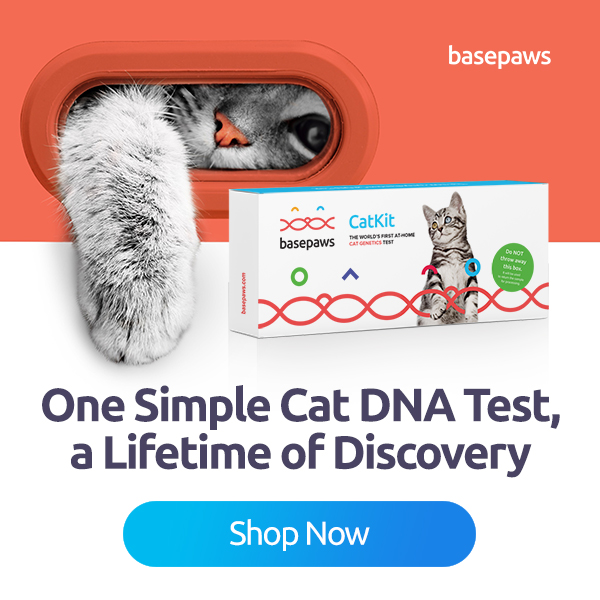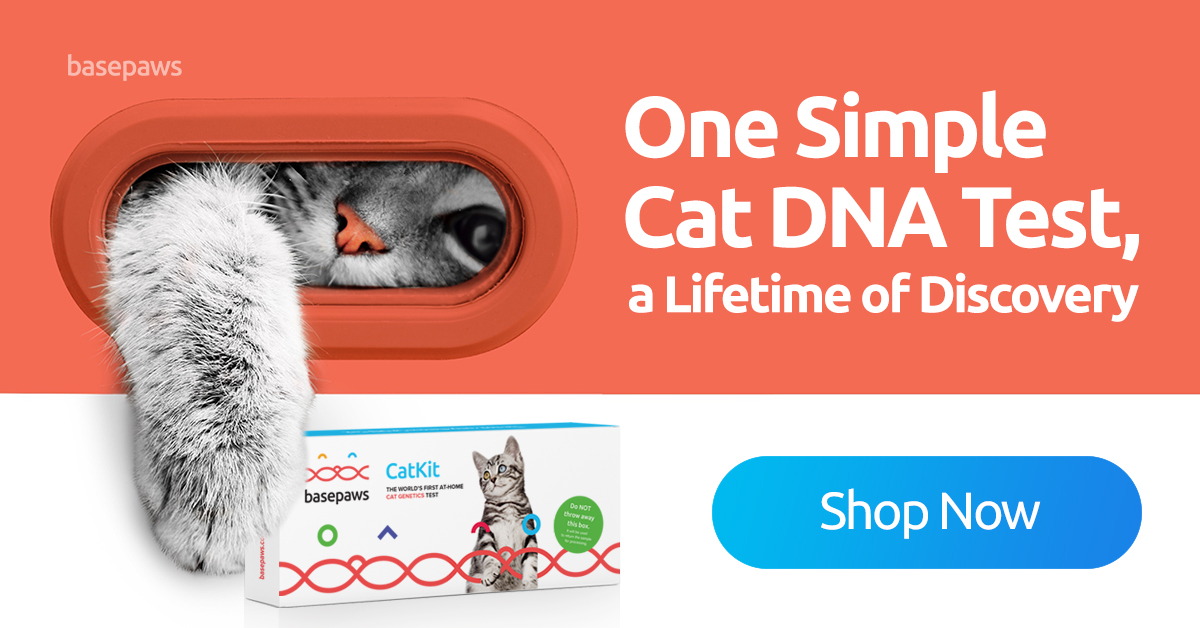FLUTD affects up to 1% of the domestic cat population. Knowing what causes Feline Lower Urinary Tract Disease is key to solving your cat’s urinary problems.
DISCLAIMER: This post may contain affiliate links. If you click one of these links and decide to make a purchase, we may receive a small commission. This comes at no extra cost to you and helps to keep the site alive and up to date. If you want more information, please review our Privacy Policy. Thank you for your support!
What Is Feline Lower Urinary Tract Disease?
Feline Lower Urinary Tract Disease (FLUTD) is a general term used to describe any disease or dysfunction relating to a cat’s bladder and urethra. It most commonly presents itself as an idiopathic inflammation, meaning the exact cause is unknown.
The inflammation generally coincides with an increased concentration of struvite crystals and/or oxalate crystals in the urine. Bacterial infections of the urinary tract can occur and need to be treated separately with antibiotics as soon as detected. Physical deformities, both congenital and traumatic, can also cause and exacerbate FLUTD symptoms.
FLUTD Symptoms
Although feline urinary disease encompasses a lot of different ailments, their symptoms are very similar.
Polyuria
A highly common symptom and often a first indicator of FLUTD is increased urination, or polyuria. In most cases, the increase is gradual over a longer period of time, which indicates an underlying chronic cause of inflammation to either the bladder, urethra or kidneys.
Sometimes a cat may present with acute polyuria combined with a sudden excessive thirst. This can be a sign of both acute urinary problems and poisoning. In either case, immediate veterinary intervention is required.
Related Post: Top 20 Feline Medical Emergencies: When To Take Your Cat To The Vet
We list the top 20 cat medical emergencies that require an immediate visit to the veterinary clinic. Read on to find out when to take your cat to the vet.Dysuria
More severe or chronic cases of FLUTD will lead to dysuria, or difficult and painful urination. The discomfort of these urinary problems will leave a cat feeling vulnerable. It is not unlikely for a cat with dysuria to show signs of anxiety and hesitation around the litter box, making extra sure the situation is safe before doing their business.
Periuria
Another sign of FLUTD that is sometimes overlooked is inappropriate urination, meaning peeing outside the litter box. If your cat is fully litter box trained, but suddenly starts doing their business elsewhere, you might think that they are just being naughty.
The more likely explanation, however, is that there is something wrong surrounding their litter box situation. Perhaps the litter box is too dirty, perhaps the litter is too coarse, or perhaps they feel so uncomfortable urinating that they’d rather do it on that soft sofa cushion.
Related Post: Top 10 Most Common Litter Box Problems
The litter box can be a real source of trouble, for cats and guardians. Let's go over the top 10 most common litter box problems and how to solve them.Stranguria
As FLUTD progresses, cats start to experience more and more difficulty urinating, until they are eventually straining to pee, which we call stranguria. Cats with stranguria will often skulk around the litter box, going on and off, leaving only little puddles of urine every time.
Hematuria
Chronic inflammation of the bladder damages the cells of its lining, which are then excreted with the urine. In severe cases, this results in fresh blood being visible in the urine. If your cat’s FLUTD has progressed to this stage, it is pivotal that you seek veterinary help. If you leave it untreated beyond this point, you are putting your cat’s life in the balance.
Urinary Retention
The most severe and most dangerous symptom of FLUTD is urinary retention caused by a blockage. These blockages can build up gradually, leading your cat through all FLUTD symptoms over a period of time, or they can present themselves acutely without much of a warning.
Blockages are almost always caused by urinary plugs, which are clots of coagulated struvite crystals and bladder lining cells that, partially or completely, seal off the urinary tract. They occur in both sexes, but male cats are at a much higher risk because they have a very long and narrow urethra.
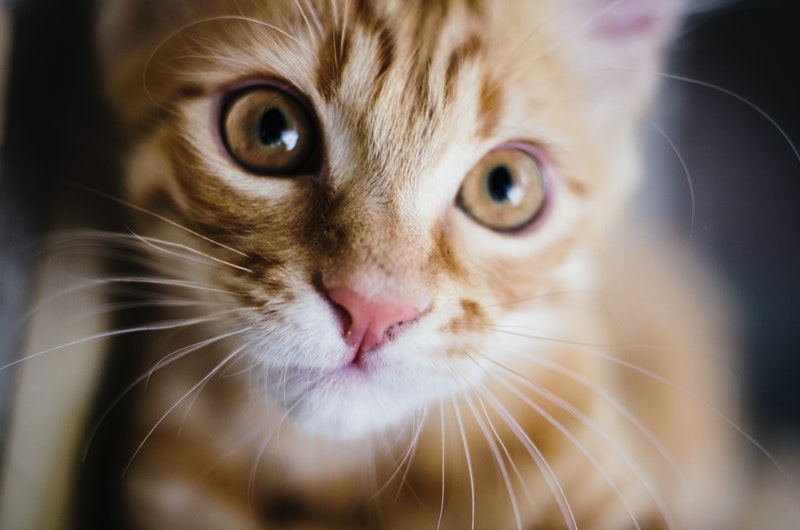
Is FLUTD Fatal?
If your cat starts showing signs of urinary problems, it is key that you take them to the vet for a full assessment of the situation. While symptoms may seem to come and go over time, they can do lasting damage if left untreated.
On top of that, without treatment your cat’s symptoms will inevitably get worse. A buildup of struvite crystals in their urinary tract can lead to an acute blockage, which leaves them unable to urinate. At this point your cat is not just in pain, but at serious risk of dying within 24 hours.
If you notice your cat showing serious signs of serious discomfort or pain, constantly hanging around the litter box, but not actually using it, rush them to the veterinary’s office immediately!
Related Post: Is Pet Insurance Worth It For Indoor Cats?
Is pet insurance worth it for indoor cats? Read this guide to learn about pet insurance for cats and calculate if it is really worth it for your indoor cat.What Causes Feline Lower Urinary Tract Disease?
Before we discuss any treatment, we should explain what causes Feline Lower Urinary Tract Disease. The answer, however, is not that straightforward. But knowing the cause of FLUTD is essential to understand why some treatments work, and some don’t.
Based on research done in the 70s and 80s, scientists and veterinarians believed that the ash content of commercial cat foods was to blame for a rise in urinary problems seen in domestic cats. Scientific testing had shown that ash, and specifically the magnesium in ash, increased the pH level of cats’ urine, which led to inflammation of the bladder and a more concentrated level of struvite crystals in the urine.
In response to this finding, pet food companies started offering low-ash, low-magnesium diets for cats with urinary tract problems, which veterinarians gladly subscribed to their patients. In a further effort to lower cats’ urinary pH levels, they also started adding ammonium chloride to the food.
More recent studies, however, have shown that neither ash in general, nor magnesium in specific, are to blame for lowering the acidity of a cat’s urine. The real problem is the fact that the ash in the majority of cat foods comes from plant-based sources.
On top of that, artificially lowering the pH with ammonium chloride has proven to put cats in a state of chemically induced acidosis, which causes their bones to decalcify. The extra calcium that passes through the kidneys in turn leads to the formation of oxalate stones that damage the kidneys and can even result in life-threatening blockages.
Research further shows that ash from meat actually has the opposite effect. It naturally lowers the pH level of urine, but not to the extent that it starts decalcifying a cat’s bones. The increased acidity kills bacteria and greatly reduces the amount of struvite crystals, leaving cats with healthy urinary tracts and without kidney stones or brittle bones.
How To Treat FLUTD
The best way to treat persistent urinary problems in cats is through their diet. When your cat is first diagnosed with FLUTD there is a fair chance that your veterinarian will prescribe a cat food that is labeled as a “urinary care” cat food. In fact, if you look closely, you will see that most regular cat foods also contain some component to support urinary health, simply because the problem has become so widespread among domestic cats.
Unfortunately, it is this food that claims to help that is actually making matters worse. For instance, an often found ingredient in urinary cat food is cranberry. Cranberry is a fruit, which contains lots of sugar and plant-based minerals (ash). Add to that the already high amount of plant-based ingredients in commercial cat foods and you’ll quickly see that it’s not doing your cat any good.
The fact is that new scientific insights take a while to disseminate across the population and see mass adoption. Your vet almost certainly means well, they might just not be up-to-date on this specific matter. They have a lot of species and developments to keep track of, after all. And commercial pet food companies tend to focus more on the “commercial” than the “pet”.
Luckily, cat people are individualistic book worms who like to figure things out for themselves. More and more of them, including myself, are waking up to the fact that we’ve basically been feeding Happy Meals to our cats all these years. Some pet lovers have actually gone the extra mile and established their own pet food companies to give all of us a better option than supermarket cat food.
The key to relieving your cat’s urinary problems is to swap their grain- and carb-filled dry food with a diet based on raw meat, which is what a cat would eat in the wild. This will not only improve their urinary health, it will be better for them overall. Cats are obligate carnivores, which means they get their energy exclusively from animal proteins and fats. Fruits and vegetables are not part of their natural diet.
You might be raising your brow at the thought of feeding your cat raw meat, but it really isn’t that difficult to make the switch. There are a number of excellent raw dehydrated and freeze dried raw cat foods on the market that are well-balanced and full of amazing ingredients.
Besides healthy animal proteins, you need to make sure your cat’s diet contains the right minerals in the right concentrations. Although the precise required mineral composition will differ per cat, in general you want to make sure that your cat’s food contains calcium, phosphorus and magnesium in a 1.3:1:.06 ratio and that it isn’t too high in sodium.
In addition to that, look for a food that contains vitamin B12 and folic acid to prevent anemia, and probiotics to support their immune system. If you can’t find a probiotic food that your cat likes, consider giving them a bit of probiotic yogurt instead. Just make sure it contains live bacteria and no added sugar or flavor. Better yet, make it yourself! It’s really easy, I promise.
Related Post: Homemade Probiotic Yogurt For Cats In 4 Easy Steps
Making your own homemade probiotic yogurt for cats is easy! Just follow these 4 steps to create a healthy, all natural treat for your cat.If your cat has any secondary ailments, please consult with your veterinarian about any additional nutritional requirements.
In all cases, make sure your cat stays hydrated. A dehydrated cat’s urine is more concentrated and therefore more harmful. Whether you need to allow your cat to drink from the sink, or buy them a pet fountain, do what it takes to keep their urine as diluted as possible.
Related Post: 12 Signs Of Dehydration In Cats
Read about the symptoms and signs of dehydration in cats. How to recognize if your cat is dehydrated, how to prevent it, and how to rehydrate a thirsty cat.Is FLUTD Curable?
Whether your cat’s FLUTD is curable depends on two things: the current progression of their disease and your dedication to helping them.
If your cat is suffering from a severe case of chronic FLUTD, their urinary tract may be damaged to the point that they will always experience some discomfort or ailments in that area. In that case, it is unlikely that your cat will ever be fully cured from it. But you can still make a big difference for them by taking away the source of the disease and preventing further damage.
Cats that are newly diagnosed with FLUTD or are experiencing only minor symptoms quickly improve after switching to a raw meat diet. The increased acidity of their urine dissolves any crystals that are present and prevents new ones from forming. At that point, your cat is essentially cured from FLUTD.
From then on it is up to you to keep them on their diet. It all comes down to keeping your cat’s urine pH on the lower side. Be strict about what you feed your cat, both when it comes to their daily food and their cat treats. Don’t fool yourself into thinking that a few grain-filled crunchy treats aren’t going to do any harm, because they will. Before you know it, you’re back at the vet’s office looking forward to another giant bill.
Best Food For Cats With FLUTD
The best food that we can recommend for cats with FLUTD at this point in time is either raw dehydrated cat food, or freeze dried raw cat food. Raw dehydrated cat food tends to be a bit more affordable and comes in varieties that more closely resemble conventional dry kibble. These are, however, slightly more processed and may contain small amounts of filler ingredients.
Freeze dried raw cat food, on the other hand, is minimally processed before freeze-drying. Therefore it is a slightly healthier option, but can be difficult to stomach for particularly queasy cat owners. It is not uncommon to find a bone or otherwise recognizable piece of animal in freeze dried pet foods. It is also more expensive, because it requires complicated machinery and high quality ingredients.
Related Post: Best Freeze Dried Food For Cats
Our number 1 recommendation for the best freeze dried food for cats is Stella & Chewy's Freeze Dried Chicken Dinner Morsels. Read our review to find out why.In either case, the best source of protein for cats is poultry, such as chicken, turkey, or even duck. This meat is lean and full of protein, which contributes to a healthy weight. If your cat tolerates seafood, you can choose a food supplemented with salmon, tuna or fish oil. The omega-3 fatty acids in these ingredients are a great immune booster and help to support your cat’s kidney function.
However, we advise against feeding your cat a food that has fish as its main ingredient. Fish generally contains more toxins than poultry, and even beef, which can put an unnecessary strain on your cat’s urinary tract.
We should note that, although the current selection of commercially available urinary care foods is suboptimal, there are signs that things are changing. We live in an age of conscious consumers and pet food manufacturers know they need to deliver higher quality products to keep their customers and their pets happy.


